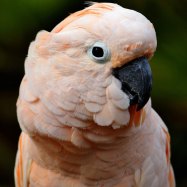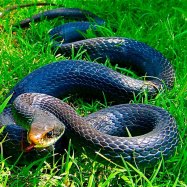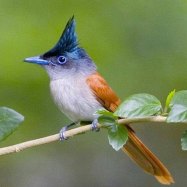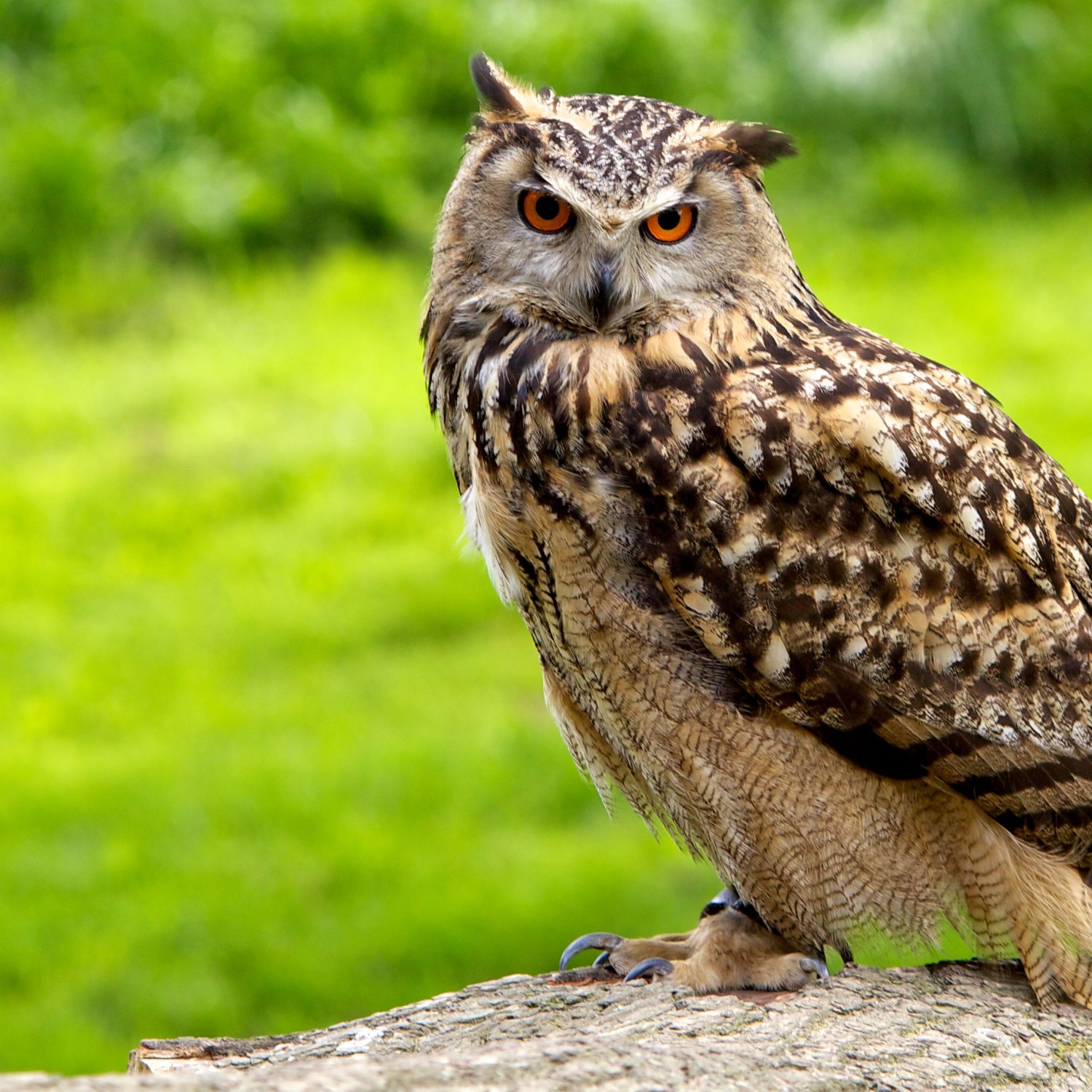
Eurasian Eagle Owl
Grows up to 66-71 cm (26-28 inches)
Meet the impressive Eurasian Eagle Owl, a majestic bird found in the Northern Hemisphere. With a large and stocky body shape, it can grow up to 66-71 cm (26-28 inches) in length. Belonging to the Strigidae family, this owl is a top predator, feeding on small mammals and birds. Its sheer size and piercing eyes make it a fascinating sight to behold in the wild. #EurasianEagleOwl #AmazingAnimals #BirdsofPrey
Animal Details Summary:
Common Name: Eurasian Eagle Owl
Kingdom: Animalia
Habitat: Woodlands, forests, rocky areas
The Regal Hunter of the Night: A Spotlight on the Eurasian Eagle Owl
The Eurasian Eagle Owl, scientifically known as Bubo bubo, is a majestic creature that towers over its forest home. As the largest owl in the world, this bird stands out not only for its impressive size but also for its stunning appearance and fierce hunting abilities. In this article, we will dive into the world of this magnificent creature, exploring its physical features, habitat, behaviors, and more.Meet the Eurasian Eagle Owl
The Eurasian Eagle Owl, also commonly known as the Eurasian Giant Owl, is a member of the Strigidae family, which includes all true owls Eurasian Eagle Owl. Native to the Northern Hemisphere, this owl species can be found in various regions across Europe, Asia, and parts of Africa, making it one of the most widely distributed owls in the world.Known for its distinct size and appearance, the Eurasian Eagle Owl has many unique characteristics that set it apart from other owl species. It has a large, stocky body shape, with broad wings and a prominent facial disk that helps it to channel sound for precise hearing. Its head features striking orange eyes, surrounded by conspicuous ear tufts that give the bird a regal appearance. The overall coloration of the bird is mottled brown and buff, providing excellent camouflage against the trees and rocks in its natural habitat.
A Hunter by Nature
As a member of the Strigiformes order, the Eurasian Eagle Owl is a carnivorous bird that primarily feeds on small mammals such as rodents, rabbits, and other birds. Using its exceptional eyesight and excellent hearing, it hunts silently during the night, swooping down on its prey with precision and agility. Its sharp, curved claws, known as talons, help it to catch and kill its prey quickly.Interestingly, while the Eurasian Eagle Owl primarily hunts at night, it is also known to hunt during the day, especially during breeding season when it needs to provide for its young Eastern Brown Snake. This bird is a solitary hunter, preferring to hunt and feed alone rather than in groups like other owl species.
A Habitat Fit for a King
The Eurasian Eagle Owl is a bird of the forests, woodlands, and rocky areas. It prefers open habitats with an abundance of prey and nesting sites such as coniferous forests, cliffs, and rocky outcrops. However, this owl has also been known to adapt to urban environments, often making its home in abandoned buildings and quarries. Its vast geographical distribution gives it access to different habitats suitable for its hunting and nesting needs.Nesting and Breeding
During the breeding season, which typically starts in late winter or early spring, the Eurasian Eagle Owl builds its nest on the ground or in a cliff crevice. Unlike other owl species, this bird does not build its own nest but uses abandoned nests of other large birds or animals. The female owl lays a clutch of 1-4 eggs, which she incubates for about five weeks. During this time, the male owl provides food for both the female and the chicks.Once the eggs hatch, the female is responsible for brooding and protecting the young while the male continues to provide food. The chicks stay in the nest for about eight weeks before they start to fly and learn how to hunt. The Eurasian Eagle Owl is a monogamous species, and the breeding pair typically stays together for life, only seeking a new partner if one dies.
Threats and Conservation Efforts
While the Eurasian Eagle Owl is not considered to be a globally threatened species, it does face several threats and challenges. The conversion of forests and rocky habitats for agricultural and urban use is one of the major factors that have led to the decline of this owl species. This loss of habitat reduces the availability of prey, making it challenging for the birds to find enough food to sustain themselves and their young.Another significant threat to the Eurasian Eagle Owl is human disturbance. The loss of habitat forces these birds to seek shelter and nest in human-made structures, putting them in conflict with humans. This often leads to cases of poaching, nest destruction, and even deliberate killings by humans who view them as pests.
However, conservation efforts are in place to protect the Eurasian Eagle Owl and its habitat. Several countries have laws and regulations in place to safeguard the owl, such as designating protected areas and promoting sustainable land-use practices. Educating communities living near the owl's habitat is also crucial in reducing human-wildlife conflicts and promoting coexistence.
The Importance of Studying the Eurasian Eagle Owl
Apart from its incredible physical and behavioral characteristics, the Eurasian Eagle Owl plays a crucial role in maintaining a healthy ecosystem. As predators of small mammals, they help regulate their populations, preventing overgrazing and damage to vegetation. Additionally, these owls are also indicators of a healthy environment and facing the challenges that threaten their survival helps in identifying any underlying issues within the ecosystem.In Conclusion
The Eurasian Eagle Owl is an awe-inspiring creature that has captured the fascination of many people for centuries. Its grand appearance, fierce hunting abilities, and vital role in maintaining a balanced ecosystem make it a species worth protecting. By understanding and appreciating these birds, we can work towards safeguarding their habitats and ensuring their survival for generations to come. So, keep your eyes glued to the skies, and you may just catch a glimpse of this magnificent bird of prey in action.

Eurasian Eagle Owl
Animal Details Eurasian Eagle Owl - Scientific Name: Bubo bubo
- Category: Animals E
- Scientific Name: Bubo bubo
- Common Name: Eurasian Eagle Owl
- Kingdom: Animalia
- Phylum: Chordata
- Class: Aves
- Order: Strigiformes
- Family: Strigidae
- Habitat: Woodlands, forests, rocky areas
- Feeding Method: Carnivorous
- Geographical Distribution: Europe, Asia, and parts of Africa
- Country of Origin: Multiple countries across its range
- Location: Northern Hemisphere
- Animal Coloration: Mottled brown and buff
- Body Shape: Large and stocky
- Length: Grows up to 66-71 cm (26-28 inches)
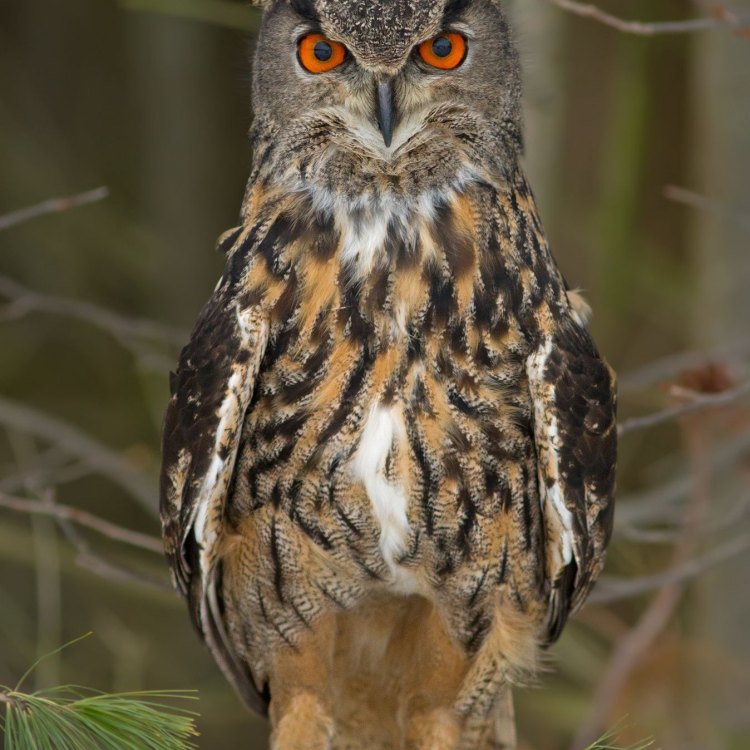
Eurasian Eagle Owl
- Adult Size: Large, with a wingspan of 160-188 cm (63-74 inches)
- Average Lifespan: Up to 25 years in the wild
- Reproduction: Sexual
- Reproductive Behavior: Monogamous
- Sound or Call: Deep booming calls
- Migration Pattern: Partially migratory, with some individuals being sedentary
- Social Groups: Solitary or reside in pairs
- Behavior: Nocturnal
- Threats: Habitat loss, persecution, collisions with vehicles and wires
- Conservation Status: Least Concern
- Impact on Ecosystem: Top predator, playing a key role in controlling populations of prey species
- Human Use: Hunting for sport and falconry
- Distinctive Features: Prominent ear tufts, large size, intense yellow-orange eyes
- Interesting Facts: One of the largest owl species in the world. Its wingspan can reach over 6 feet
- Predator: Few natural predators
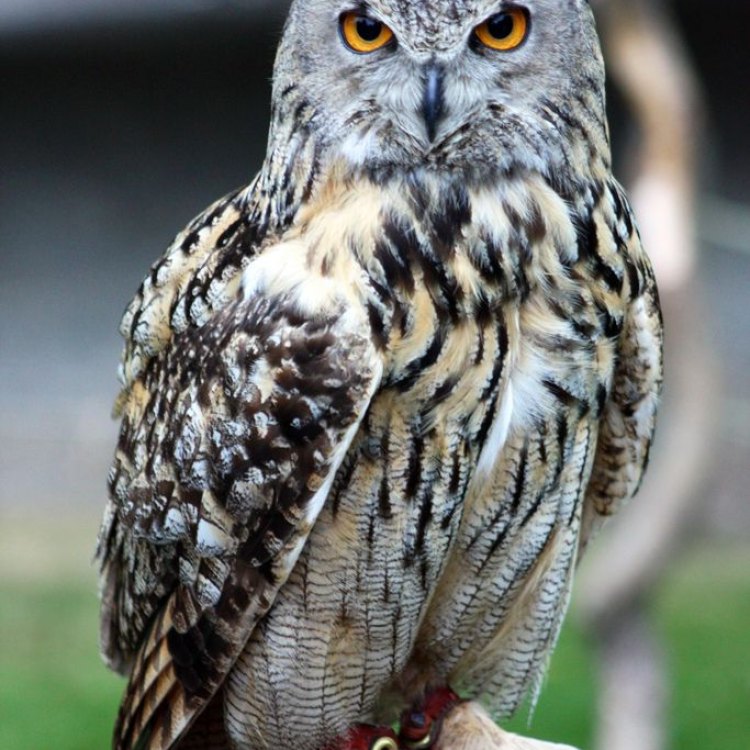
Bubo bubo
The Fascinating Eurasian Eagle Owl: A Majestic Giant of the Night Skies
With a wingspan of up to 6 feet and a strikingly powerful and intense gaze, the Eurasian Eagle Owl is a true sight to behold. This magnificent bird of prey is one of the largest owl species in the world and has captured the imagination of humans for centuries. Known for its monogamous mating behavior, distinct features, and regal presence, the Eurasian Eagle Owl is a fascinating creature with a vital role in its ecosystem.Standing at an impressive height of up to 2 PeaceOfAnimals.Com.5 feet, the Eurasian Eagle Owl is a behemoth of the bird world. Its large size and powerful wingspan allows it to soar and glide through the skies with ease. Adult Eurasian Eagle Owls have a wingspan of 160-188 cm (63-74 inches) and can weigh up to 5.5 pounds, making them one of the heaviest owl species in the world. Their size and strength give them a commanding presence and helps them to dominate their surroundings.
The average lifespan of a Eurasian Eagle Owl is up to 25 years in the wild. However, in captivity, they have been known to live up to 60 years. These long lifespans are due to their impressive adaptability and survival skills. They have a slow reproductive rate, with a female eagle owl only laying a clutch of 1-4 eggs per year, making each individual bird's life crucial to the survival of their species Evening Bat.
Reproduction in Eurasian Eagle Owls is sexual and takes place from February to June. During this time, the male and female will engage in elaborate courtship rituals, showcasing their strength and agility to each other. Once a pair has formed, they will remain monogamous for life, working together to raise their young. This monogamous behavior is rare in the animal kingdom and is a testament to the strong bond between male and female Eurasian Eagle Owls.
One of the most distinctive features of the Eurasian Eagle Owl is its prominent ear tufts. These ear tufts are not actually ears, but rather feathers that help the owl to blend into its surroundings and break up its silhouette. Additionally, the ear tufts serve as a sign of the bird's mood. When the tufts are standing upright, the owl is alert and focused, but when they are relaxed, the owl is calm and content.
The intense yellow-orange eyes of the Eurasian Eagle Owl are another defining feature. These large, piercing eyes are highly adapted for hunting in low light conditions, allowing them to spot prey up to one mile away. Their keen eyesight, combined with their exceptional hearing, makes them formidable nocturnal predators. The Eurasian Eagle Owl is also known for its deep booming calls, often used for communication and marking territory.
The Eurasian Eagle Owl is a partially migratory species, with some individuals being sedentary. This means that they will remain in their territory year-round, while others may migrate to areas with more abundant food sources. However, even their migratory pattern is not completely predictable, with some birds choosing to stay in their territories even through harsh winters.
As a solitary or pair-based species, Eurasian Eagle Owls are not highly social birds. They prefer to reside in secluded and undisturbed areas, using their powerful flight and sharp talons to catch and kill their prey. They are primarily nocturnal, hunting at night and resting during the day in dense trees or cliffs.
Habitat loss, persecution, collisions with vehicles and wires are some of the threats facing the Eurasian Eagle Owl. Human activities such as agriculture and urbanization are encroaching on their natural habitats, leaving them with less space to hunt and breed. This, combined with illegal hunting for sport and falconry, puts the population of Eurasian Eagle Owls at risk.
Despite these threats, the Eurasian Eagle Owl is currently listed as "Least Concern" on the IUCN Red List of Threatened Species. This is due in part to their adaptable nature and their ability to thrive in a range of habitats. However, continued conservation efforts are necessary to ensure their survival and to prevent any further decline in the wild.
The impact of the Eurasian Eagle Owl on its ecosystem cannot be overstated. As a top predator, they play a vital role in controlling populations of prey species, such as rodents, insects, and small mammals. This helps to maintain the balance within the ecosystem and prevents overpopulation of certain species. Without the Eurasian Eagle Owl, the prey species would multiply uncontrollably, leading to imbalances in the food chain and potential ecological disasters.
Humans have long been fascinated by the Eurasian Eagle Owl and have found both cultural and practical uses for them. In ancient times, the owl's image was often used as a symbol of wisdom and protection. In more recent times, they have been used for hunting and falconry, a practice that dates back centuries. Their powerful hunting abilities and intelligence make them highly sought after in the world of falconry.
In conclusion, the Eurasian Eagle Owl is a majestic giant of the night skies, with its impressive size, stunning features, and important role in its ecosystem. As a monogamous, partially migratory, and nocturnal species, they have captured the fascination of humans for centuries. However, with threats to their habitat and population, it is crucial that we continue to work towards their conservation. The Eurasian Eagle Owl truly is a remarkable and irreplaceable creature that deserves our admiration and protection.
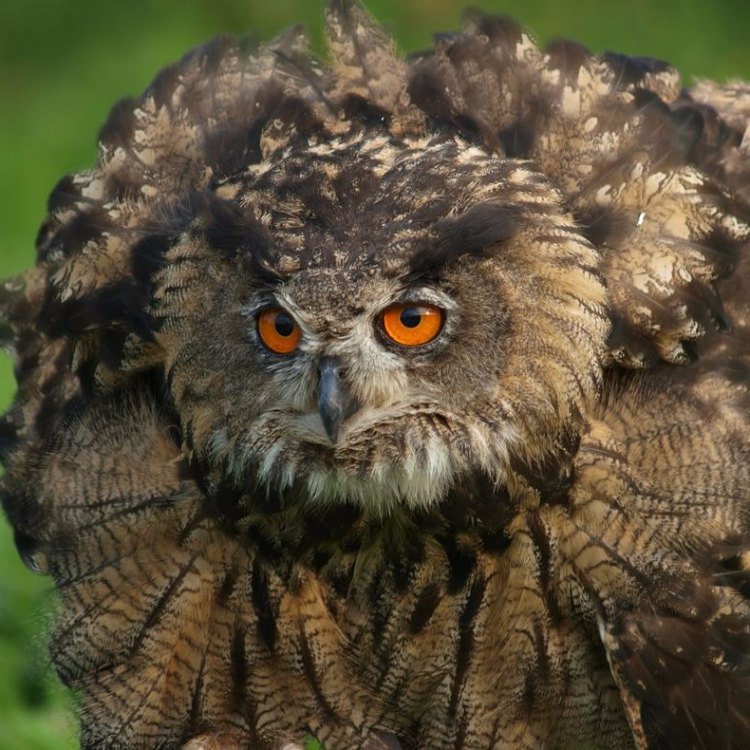
The Regal Hunter of the Night: A Spotlight on the Eurasian Eagle Owl
Disclaimer: The content provided is for informational purposes only. We cannot guarantee the accuracy of the information on this page 100%. All information provided here may change without prior notice.

